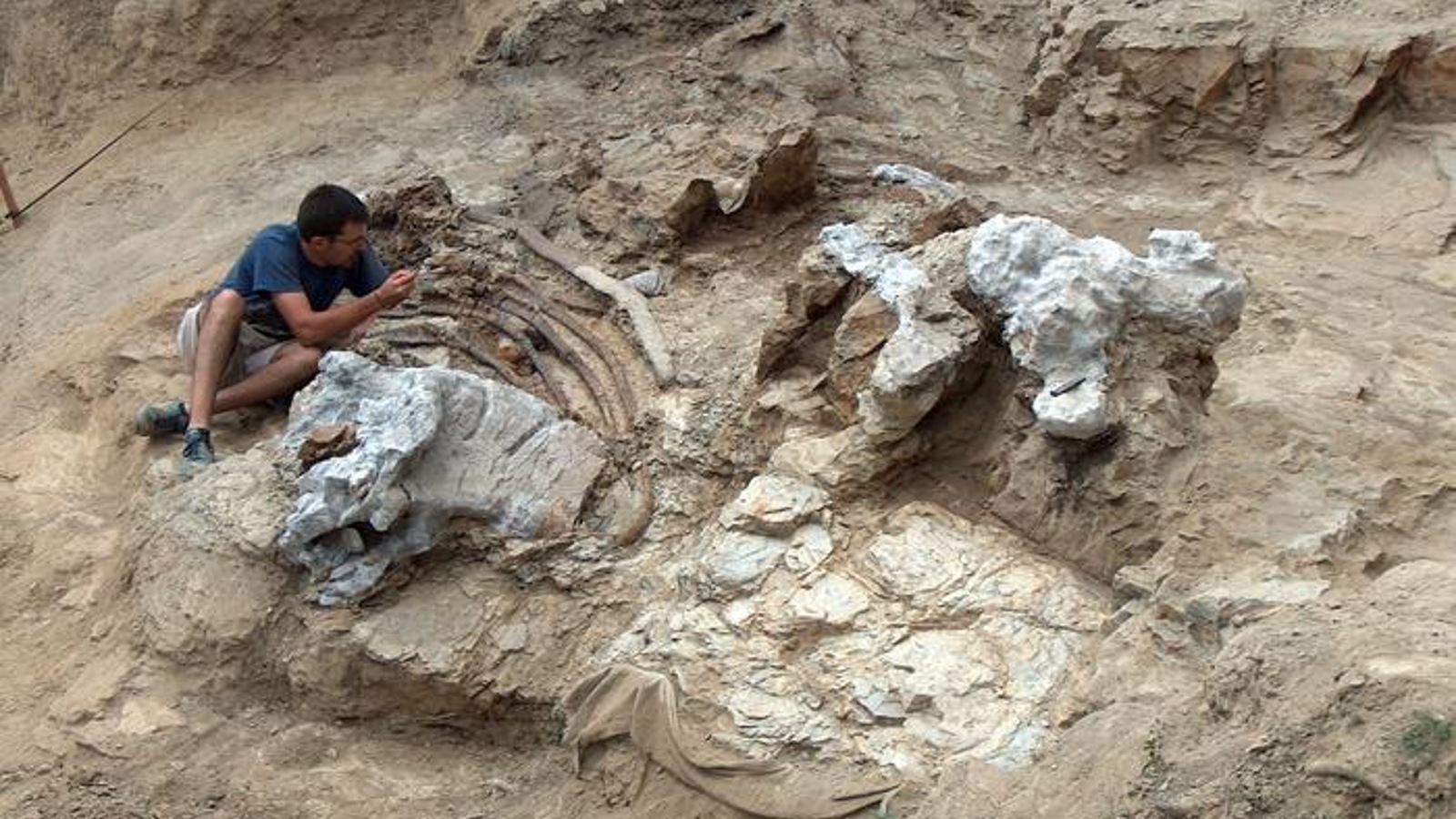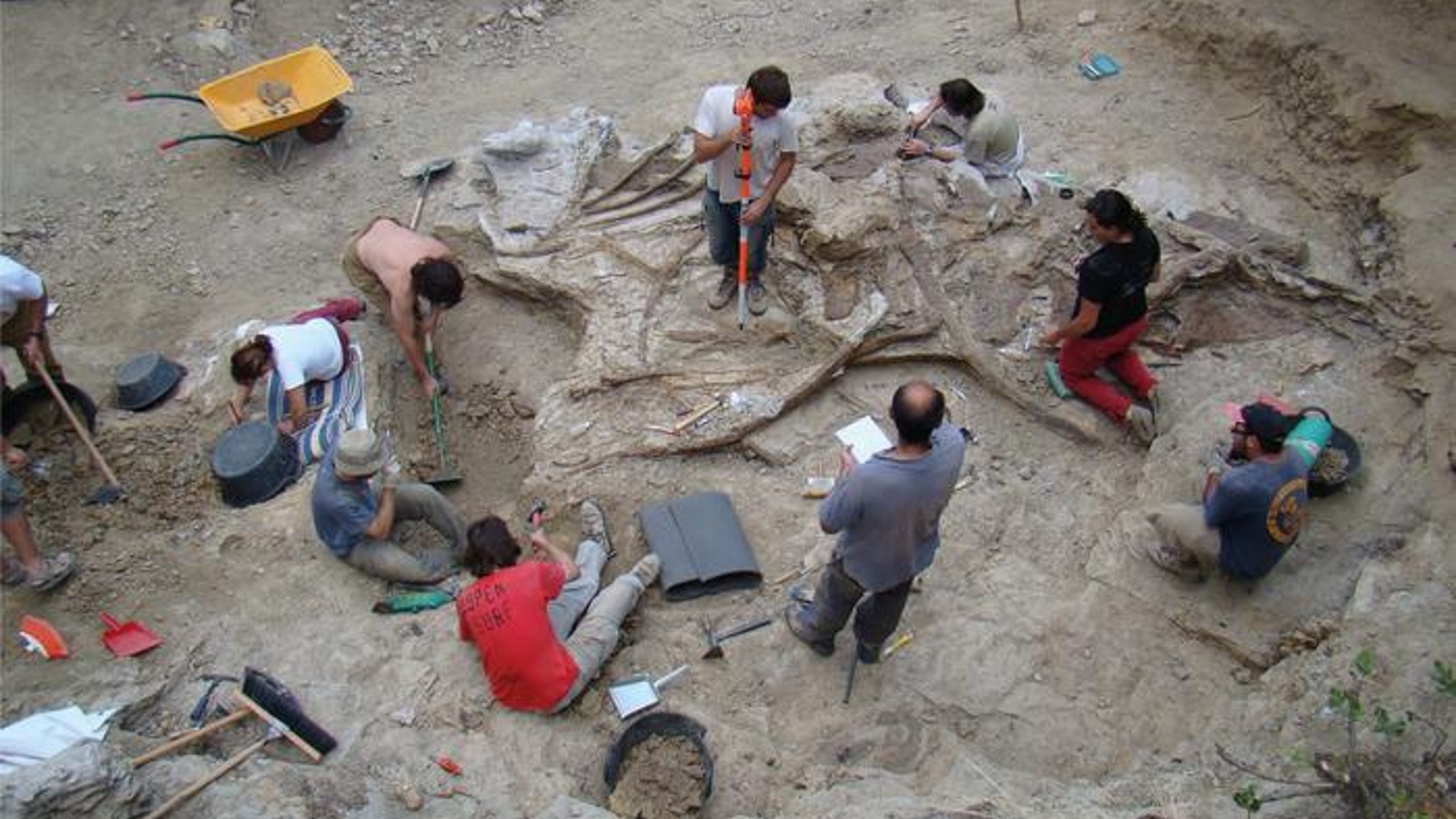Giant never-before-seen long-necked 'titan' dinosaur unearthed in Europe
The newly identified titanosaur, Garumbatitan morellensis, roamed what is now Spain around 122 million years ago. The unusual shape of some of its bones could hold clues about the evolutionary history of a unique group of sauropods.
A massive, never-before-seen sauropod roamed what is now Spain roughly 122 million years ago, new fossils show. The unusual shape of its bones suggests the newly described "titan" was quite primitive, which could help scientists better understand the evolution of these gigantic, long-necked dinosaurs.
The newly identified species, named Garumbatitan morellensis, was unearthed during excavations at the Sant Antoni de la Vespa fossil site near the city of Morella between 2005 and 2008. Researchers uncovered remains of at least three individuals at the site, including massive vertebrae, lengthy leg bones and two near-complete sets of foot bones, which is an extremely rare find for sauropods. The fossils date back to the early Cretaceous period, (145 million to 66 million years ago).
Researchers described G. morellensis in a new study published Sept. 28 in the Zoological Journal of the Linnean Society.
Sauropods, including Diplodocus and Brachiosaurus, are four-legged herbivorous dinosaurs with elongated necks and tails that could reach colossal sizes. G. morellensis belongs to a subgroup of sauropods known as titanosaurs, which were the most massive sauropods and the only lineage to survive until the dinosaur-killing asteroid struck around 66 million years ago.
Related: Long-necked dinosaurs probably had even longer necks than we thought
Based on the available bones, the researchers can't tell exactly how large G. morellensis could get. But one of the individuals "stands out for its large size, with vertebrae more than one meter [3.3 feet] wide, and a femur that could reach two meters [6.6 feet] in length," study lead author Pedro Mocho, a paleontologist at the University of Lisbon in Portugal, said in a statement.
Based on the size of these bones, G. morellensis was likely at least average-size for titanosaurs, which often grew to around the size of a basketball court.
Get the world’s most fascinating discoveries delivered straight to your inbox.
The largest named titanosaurs — and largest dinosaurs — are Argentinosaurus huinculensis and Patagotitan mayorum. Scientists debate which species was heaviest, but they both likely weighed at least 70 tons (63.5 metric tons). However, in 2021, researchers uncovered the remains of a new unnamed species of titanosaur in Argentina that could potentially have been larger than both A. huinculensis and P. mayorum.
Although titanosaurs were the heaviest sauropods, they were not the longest. That title likely belongs to the unidentified sauropod species nicknamed "Supersaurus," which stretched to 128 feet (39 m) long.
Related: Longest dinosaur neck ever stretched further than a school bus at 49 feet long
The shape of its leg and foot bones suggests that G. morellensis was one of the most primitive sauropods in the sub-group Somphospondyli, which includes titanosaurs as well as some other, more elongated sauropods like Brachiosaurus, researchers wrote.
Somphospondylan fossils are found on every modern-day continent, but until now it has been unclear exactly where they originated. The discovery of this primitive somphospondylan in Spain hints that Europe could be where they first roamed, researchers suggest. However, more evidence is needed to prove this.
The study team also believes that Sant Antoni de la Vespa, as well as other sites in the Iberian Peninsula, could be the key to learning more about sauropod evolution. In 2022, scientists revealed the remains of an enormous unidentified sauropod in Portugal that is a contender for Europe's largest known dinosaur fossil, which dates back to 150 million years.

Harry is a U.K.-based senior staff writer at Live Science. He studied marine biology at the University of Exeter before training to become a journalist. He covers a wide range of topics including space exploration, planetary science, space weather, climate change, animal behavior and paleontology. His recent work on the solar maximum won "best space submission" at the 2024 Aerospace Media Awards and was shortlisted in the "top scoop" category at the NCTJ Awards for Excellence in 2023. He also writes Live Science's weekly Earth from space series.





